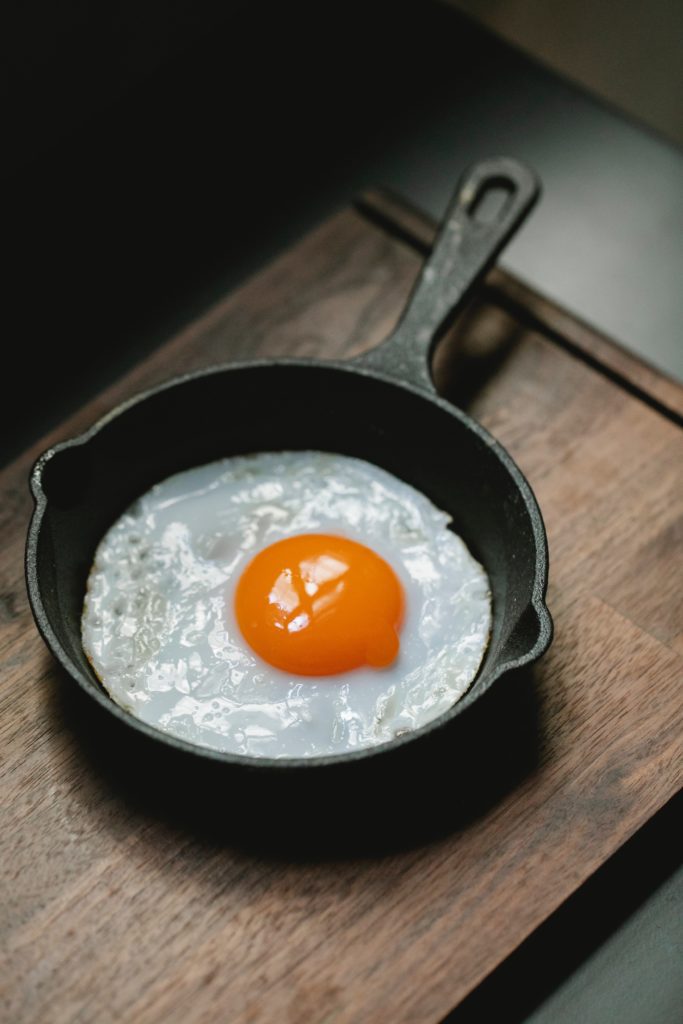A Food Fun Travel Guest Post
It is important to learn how to season a cast-iron skillet if you own one or are planning to purchase one. Cast iron skillets are one of the best tools to have in any kitchen. You can cook anything from steak to pizza with them. It becomes naturally nonstick when properly seasoned and maintained, making it ideal for cooking.
Despite cast-iron skillets’ versatility and durability, some people are wary of using them because food may stick to the surface, and an improperly seasoned skillet can become difficult to clean. This article discusses how to season a skillet and keep it in great condition for years to come.
Cast Iron Skillet
A cast-iron skillet is made by melting blocks of iron and steel together and adding chemicals to the mixture. The molten metal is then poured into a mold and is released from the mold when it’s cool. The cookware is then smoothed before it is sold.
Cast iron cookware absorbs heat slowly and releases it slowly, making it a great choice for slow cooking. The metal is highly reactive, so even a droplet of water can cause rust to form on your cast iron pan.
Reasons for Having A Cast Iron Skillet
Cast-iron skillets are highly popular for the following reasons:
- Other types of cookware pose health risks. It has now become known that some non-stick coated pans emit toxic fumes once heated past a certain point. There are no risks associated with cast iron cookware, and it can be heated to extremely high temperatures.
- Most people prefer to invest in cookware that will last for years, and cast iron cookware can last for years if it is treated properly.
- Food looks great on it. A cast-iron skillet can be used to make sizzling steaks, fajitas, giant skillet cookies, and serve food with a unique rustic flair.
- Cast iron remains intact, which is why cast-iron pans can be treasured heirlooms.
What is Seasoning?
Cast iron is easily corroded. When exposed to humidity, it rusts quickly. It can also rust when food sticks to bare iron during cooking. Due to this, the surface must be seasoned or protected by a barrier. All that needs to be done is to get a layer of oil to settle within the metal. As the oil reacts with the metal and the heat, the fatty acids break down (oxidize) and reform (polymerize) into larger molecules that bond with one another and the metal.
Thus, the cookware is coated with a layer that prevents metal from rusting in the presence of air and water. When oil is heated and used, it thickens, making the surface smooth, slick, and nonstick, as well as rust-resistant.
Reasons for Seasoning
Seasoning makes your skillet release food easily and move food easily around your pan. You can reduce the use of fats and oils when cooking on the smooth iron surface, resulting in lower-calorie meals. Well-seasoned skillets make food taste better. The seasoning makes cleaning the skillet quick and easy, as well as free of stains and rust.
You should season an uncoated cast iron skillet with oil before using it. The pre-seasoned skillet can still be further seasoned at home to ensure durability and longevity. It is, however, completely optional.
Best Oil for Seasoning
The heat eventually causes oil to polymerize. However, how do you determine which oils are the best for achieving the perfect seasoning? How does a particular oil make it to the list of oils to season a cast-iron skillet? Let’s find out.
High Point of Smoke
It is the temperature at which oil begins to smoke and decompose. For seasoning cast iron at recommended temperatures of 400-500 degrees, you need an oil with a higher smoking point. It is a good idea to choose a seasoning oil with a higher smoke point than the cooking temperature.
The Concentration of Unsaturated Fats
Generally speaking, highly unsaturated fats are better because they are more susceptible to oxidation and polymerization. You should avoid using oils with high saturated fat concentrations, such as coconut oil and palm oil, to season your skillet. This is also true of bacon grease and lard, both of which are high in saturated fats.
Neutral Flavor
Because cast iron skillets absorb flavor from the oil you use for seasoning, you should use a flavorless oil. As an example, peanut oil does not always make the best seasoning for cast iron due to its strong peanut flavor that can permeate the food cooked in the skillet.
Cost-Effectiveness
Buy a good oil for seasoning your cast iron skillet without spending a lot on it. Though flaxseed, grapeseed, and avocado oil are considered the best options for seasoning, they are expensive. If you use your cast iron cookware frequently, then go for a more affordable seasoning oil. For example, canola or corn oil can get the job done and is cheaper than others.
Seasoning A Cast Iron Skillet
Cast iron can be easily seasoned. Even if your cast iron skillet is old, rusted, or beat up, you can season it back up like new following the steps below.
Step 1: Wash and Dry the Skillet
First, you will want to wash and dry the cast iron. The purpose of this is not only to aid the seasoning process but also to keep everything sanitary. Using warm, soapy water, scrub the pan thoroughly, then dry it thoroughly with a towel or paper towel.
There may still be some moisture remaining on the surface. To drive off any lingering moisture in the skillet, place the skillet in your oven or on the stovetop for a minute or two.
Step 2: Rub It With Oil and Buff It
Next, rub it inside and out, including the handle, with neutral and highly unsaturated cooking oil of your choice. You need to rub the oil all over the pan, then buff it until it doesn’t appear greasy.
An excess of oil on the skillet surface can accumulate during heating, forming hardened droplets on the surface, or can become sticky if left unused for a few days.
Step 3: Heat It
Place the skillet upside down in the middle rack of a preheated (450°F) oven and leave it there for one hour. The oven provides an even heat that helps to set the oil all over the pan more evenly. It may get a little smoky, so keep your kitchen well ventilated. At this point, the polymerization process starts, and the oil transforms into a smooth skillet covering.
Don’t worry if you don’t have an oven. To season your cast-iron skillet, use a stovetop, or burner. Keep an eye on your pan when using a stovetop as it may start smoking rather quickly.
Step 4: Cooling and Coating
After one hour, leave it to cool in the oven. Remove it and rub it with a light coat of oil again. Store it in a dry place. Now it’s ready for cooking.
To lay down a good initial layer of your seasoning, you can repeat the above procedure. If you choose to repeat, heat the pan for half an hour (in step 3) and remove. Cool and rub it once more with oil, buffing it out as before. Place it back in the oven for another 30 minutes. Repeat until the desired number of times (typically about 3 or 4 times) is achieved. Once completed, let the skillet cool.
A properly seasoned cast iron will have a dark, gleaming finish that is neither sticky nor greasy. No rust or sediment will show on the surface. Try frying an egg in a skillet with butter or vegetable oil if you want to be sure. The egg won’t stick if it’s properly seasoned. If it sticks, repeat the seasoning process.

Seasoned Skillet Care
Once the skillet has been seasoned, it’s important to maintain it properly. Clean your pan as soon as you use it. Clean the skillet with water and never with an abrasive such as a shine pad or harsh cleaners. Do not fill it with water or soapy water and leave it overnight, or put it through the dishwasher.
If there is some buildup, add some oil and kosher salt and scrub with a paper towel until the sediment is gone. Once the residue is gone, wash it with water and make sure that you dry it as much as possible. Oil your pan again once it’s completely dry.
Make sure your cast iron skillet is completely dry before hanging it up or storing it in a cupboard. If you plan to store it with other pans, use a paper towel to keep it from getting scratched.
Final Thoughts
A cast-iron skillet is versatile, durable, and can be used to cook almost anything, from steak to pizza, so long as it is kept clean and in good shape. Think of seasoning as a tiny coat of armor for your skillet.
Your cast-iron skillet can be a good nonstick pan with some oil, heat, and time. Take care of it, and you can take it with you on your next road trip, preparing meals that taste as though they were cooked directly over an open fire.



